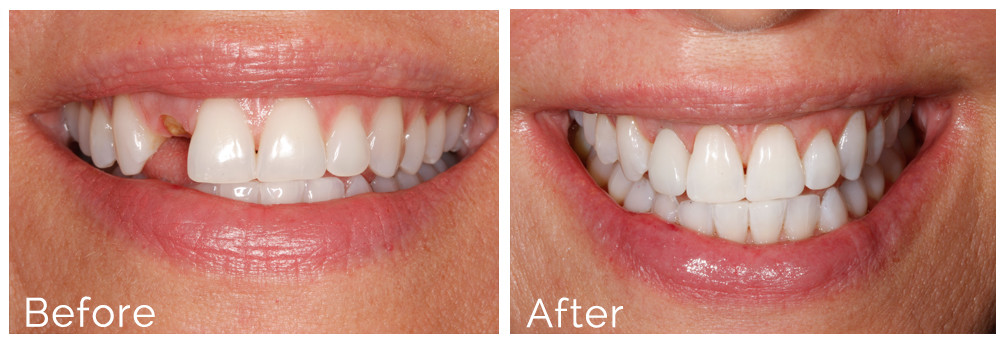Getting My Dental Sense To Work
Table of ContentsThe 7-Minute Rule for Dental SenseThe 7-Second Trick For Dental SenseWhat Does Dental Sense Mean?What Does Dental Sense Mean?
are medical devices surgically dental implanted right into the jaw to recover an individual's capability to eat or their appearance. They offer support for fabricated (fake) teeth, such as crowns, bridges, or dentures. When a tooth is shed because of injury or illness, a person can experience problems such as rapid bone loss, malfunctioning speech, or modifications to chewing patterns that cause discomfort.Oral dental implant systems consist of an oral implant body and dental implant abutment and might additionally consist of a joint fixation screw. Wisdom tooth cavity. The dental implant body is surgically put in the jawbone instead of the tooth's origin. The dental implant abutment is normally connected to the dental implant body by the abutment fixation screw and extends through gum tissues right into the mouth to sustain the attached fabricated teeth
(https://www.behance.net/matthewmusic)Framework of The Oral Implant System choosing oral implants, speak to your oral provider regarding the possible advantages and risks, and whether you are a candidate for the procedure. Points to think about: Your overall health and wellness is a vital consider establishing whether you are a good prospect for oral implants, the length of time it will certainly require to heal, and how much time the implant might remain in place.
Smoking might affect the healing process and reduce the long-term success of the implant. The recovery process for the implant body may take several months or longer, throughout which time you generally have a short-lived joint in area of the tooth. the dental implant treatment: Very carefully comply with the dental hygiene guidelines offered to you by your dental copyright.
Things about Dental Sense
Implant failure can result in the requirement for one more surgical procedure to deal with or change the implant system. Brings back the ability to chew Recovers cosmetic appearance Helps keep the jawbone from diminishing as a result of bone loss Preserves the health of the bordering bone and gum tissues Assists maintain surrounding (close-by) teeth stable Boosts lifestyle Damage to bordering all-natural teeth during implant positioning Injury to the surrounding cells throughout surgery, such as sinus opening Injury during surgical treatment (as an example, fracture of surrounding jawbone) Insufficient function, such as seeming like the teeth do not attack together usually A sensation that the tooth is loosened or twisting in location resulting from an abutment screw loosening up Implant body failure (looseness of the implant body) because of systemic infection, which may be a lot more likely in patients with unrestrained diabetes mellitus due to neighborhood infection in bone and gum tissues sustaining the implant body as a result of delayed recovery, which may be more probable in individuals that smoke Trouble cleaning the gum tissues around the implant, leading to poor dental health Neglected periodontal illness Post-surgical tingling as a result of nerve impingement or damage Constantly alert healthcare companies and imaging professionals that you have dental implants before any magnetic resonance imaging (MRI) or x-ray procedures.
FDA is not knowledgeable about any kind of adverse occasions reported for MRI or x-ray procedures with oral implants. Oral implants systems are typically made from products that comply with international agreement standards of the International Organization for Standardization (ISO) or ASTM International. These criteria have details of what makes a safe product.

An oral implant is a structure that changes a missing out on tooth. With screw-like devices, the cosmetic surgeon inserts a dental implant into the jawbone, and it acts as a support for an artificial tooth, called a crown.
What Does Dental Sense Mean?
Some individuals are not eligible for dental implant surgical procedure. It is for dental specialists to operate individuals with: acute illnessuncontrollable metabolic diseasebone or soft additional reading cells illness or infectionIf these concerns are dealt with, a person can have the surgical procedure. In, oral surgeons refrain from operating people with: If individuals with any of the above undertake oral implant surgery, there is a greater threat of the implant stopping working.

Oral implant surgical procedure is a personalized procedure. It's not the exact same for every person. The following offers a basic introduction of what you can expect your dental expert, oral cosmetic surgeon, periodontist or prosthodontist to do: Put the dental implant surgically. Provide you time to heal. Affix the message and last crown, bridge or denture.
Next off, your doctor will meticulously position the dental implant into your jaw. If your dental implant is near the front of your mouth, your dental expert will certainly make a momentary tooth for you to use up until you heal.
Getting The Dental Sense To Work
Your copyright can tell you what to expect in your scenario. During the healing phase, your jawbone needs to fuse to the dental implant. This process, called osseointegration, is critical for security and long-term success. This process can take anywhere from three to 9 months. Sometimes, it might take longer.
As soon as your dental implant heals, your dental expert can attach the abutment (little port post) and your final repair (crown, bridge or denture). This normally takes concerning one hour to complete and may call for a 2nd small surgical procedure. You should not really feel any type of pain during your oral implant treatment because your provider will certainly utilize drug to numb your gum tissues.
 Amanda Bearse Then & Now!
Amanda Bearse Then & Now! Erik von Detten Then & Now!
Erik von Detten Then & Now! Elisabeth Shue Then & Now!
Elisabeth Shue Then & Now! Raquel Welch Then & Now!
Raquel Welch Then & Now! Dawn Wells Then & Now!
Dawn Wells Then & Now!